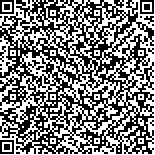张倩倩,刘志刚,刘锦娟,等.基于心肺运动试验的个体化运动康复疗法对老年稳定期慢性阻塞性肺疾病患者的影响[J].中华物理医学与康复杂志,2023,45(3):238-242
扫码阅读全文

|
| 基于心肺运动试验的个体化运动康复疗法对老年稳定期慢性阻塞性肺疾病患者的影响 |
|
| |
| DOI:10.3760/cma.j.issn.0254-1424.2023.03.010 |
| 中文关键词: 心肺运动试验 个体化运动康复疗法 慢性阻塞性肺疾病 稳定期 |
| 英文关键词: Cardiopulmonary exercise testing Individualized exercise programs Obstructive pulmonary disease |
| 基金项目: |
|
| 摘要点击次数: 4483 |
| 全文下载次数: 4586 |
| 中文摘要: |
| 目的 探讨基于心肺运动试验的个体化运动康复疗法对老年稳定期慢性阻塞性肺疾病(COPD)患者的影响。 方法 选取老年稳定期COPD患者120例,按照随机数字表法将其分为试验组和对照组,每组60例。2组患者均给予药物和常规康复治疗,试验组增加基于心肺运动试验制订的个体化运动康复疗法。治疗前、治疗3个月后(治疗后),采用Borg评分评估2组患者的呼吸困难程度,记录第1秒用力呼气容积(FEV1)、用力肺活量(FVC)、第1秒用力呼气容积与用力肺活量比值(FEV1/FVC)、最大摄氧量(VO2max)、无氧阈(AT)、心率(HR)、心脏指数(CI),采用6 min步行距离(6MWD)测定患者的最大步行距离,评估康复疗效。 结果 治疗前,2组患者的Borg评分、心肺功能指标、6MWD比较,差异无统计学意义(P>0.05)。治疗后,2组患者的Borg评分、心肺功能指标、6MWD均较组内治疗前改善(P<0.05)。试验组治疗后Borg评分[(2.38±0.45)分]、FEV1[(3.65±1.31)%]、FVC[(64.09±12.10)%]、FEV1/FVC[(61.98±11.34)%]、VO2max[(19.62±4.06) ml/kg/min]、AT[(669.25±133.82) ml/min]、HR[(96.52±20.59)次/分]、CI[(3.98±1.17) L/min/m2]、6MWD[(315.25±60.12)m]、总有效率(58.33%)均高于对照组(P<0.05)。 结论 基于心肺运动试验的个体化运动康复疗法,可以缓解老年稳定期COPD患者的呼吸困难症状,改善心肺功能,提高运动耐力和康复疗效。 |
| 英文摘要: |
| Objective To explore any effect of following an individualized exercise program on the cardio-pulmonary health of elderly persons with stable chronic obstructive pulmonary disease (COPD). Methods A total of 120 elderly COPD patients were randomly divided into an experimental group and a control group, each of 60. Both groups were given medication and routine rehabilitation treatment for 3 months, but the experimental group also followed an individualized exercise program based on the cardiopulmonary exercise test. Before and after the treatment, Borg scoring was used to assess the subjects′ degree of dyspnea. Forced expiratory volume (FEV1), forced vital capacity (FVC), maximum oxygen uptake (VO2max), anaerobic threshold (AT), heart rate (HR) and a heart index (CI) were also recorded. The 6-minute walk test (6 MWD) was administered to evaluate the rehabilitation effect. Results There were no significant differences in the average Borg scores, cardiopulmonary function indexes or 6MWD distances between the two groups before treatment. After the treatment significant improvement was observed in all of the measurements in both groups, but at that point all of the experimental group′s averages were better than those of the control group. Conclusion Individualized exercise based on the cardiopulmonary exercise test can alleviate the symptoms of dyspnea in elderly COPD patients, improve their cardiopulmonary functioning and exercise endurance and improve the rehabilitation effect. |
|
查看全文
查看/发表评论 下载PDF阅读器 |
| 关闭 |
|
|
|